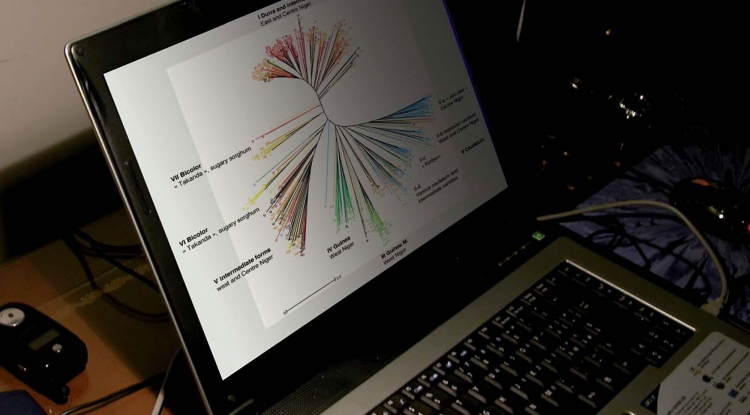A collection has no scientific value except if the biological objects are complemented with a number of data (geographical origin, identification, etc.). On some occasions, what is to be managed are associated knowledge and wisdom (agricultural uses and practices, representations, vernacular names, etc.) Such knowledge and information associated with the collections require tools for managing. heterogeneous data.
Natural sciences are characterized by the vast amount of data they produce: field observations, samples, reference frames…The rapid evolution of informatics allows one to foresee the valorization of these data at all levels, from the researcher or the isolated collection to the whole world. But challenges are many.
The first of these challenges is computerizing the collections to allow access to all the data related to samples and improve the use of these reservoirs of information for research needs or for those of society in general. Numerous collections, for which this procedure has been initiated sometimes decades ago, have been computerized already and their data can be accessed through the internet. For other collections, this work-sometimes an enormous one-still remains to be done. The E-ReColNat project aims to bridge this gap for herbaria, in particular for MPU and Cirad’s ALF herbarium.
A second challenge is allowing simultaneous searches through all these naturalistic databases, created independently from one another, with consequently extremely heterogeneous data formats and management systems. To meet this problem, the international Biodiversity Standards (Taxonomic Database) working group, whose Congress in 2010 was hosted in Montpellier, offers standards and formats for data exchange. Thanks to these, the Web portal of the Global Biodiversity Information Facility (GBIF) offers a single entry point to an increasing number of databases in the field of biodiversity.
Yet, these technical standards, although they cannot be dispensed with, are not adequate enough.
It is moreover necessary to set up common reference frames, which is far from an easy task, given the highly heterogeneous level of knowledge depending on taxa or geographical zones.
In this respect also, some international initiatives are striving, with mixed success, to federate those reference frames most in use. Thus, for vascular plant species (flowering plants, coniferous species, ferns and mosses) the “Plant List” *** portal, opened in 2010, collects nearly 1.3 million scientific names from many regional, national and international sources.
In France, Tela Botanica (Montpellier) manages a reference frame for French flora and has been charged by the Ministry Environment with the coordination of these reference frames for fungi, algae, lichens and for the French Overseas flora.
A last challenge deals with the tools allowing the individual researcher or amateur to manage their own data, while interacting with various online servers at the same time.
Data to be managed can be quite diverse: text data, maps and especially photos; in a digital world, taking photos becomes an easy tasks and their number soars up correspondingly. Ways to valorize these photos become more diversified: participatory identification, image recognition, etc.
In the field of botany, Pl@ntNet was created to meet these challenges. Among the major on-going projects, can be found in particular a data manager facilitating the production, sharing and aggregation of all types of data on plants, as well as tools for automatic or assisted recognition, for collaborative validation of information, etc.
Large quantity of heterogeneous data can also be generated and managed in a collaborative way through wikis; this is the case of the PlantUse project, a case study within the Pl@ntNet project, devoted to useful plant species, which benefits from functions of the MediaWiki motor.


